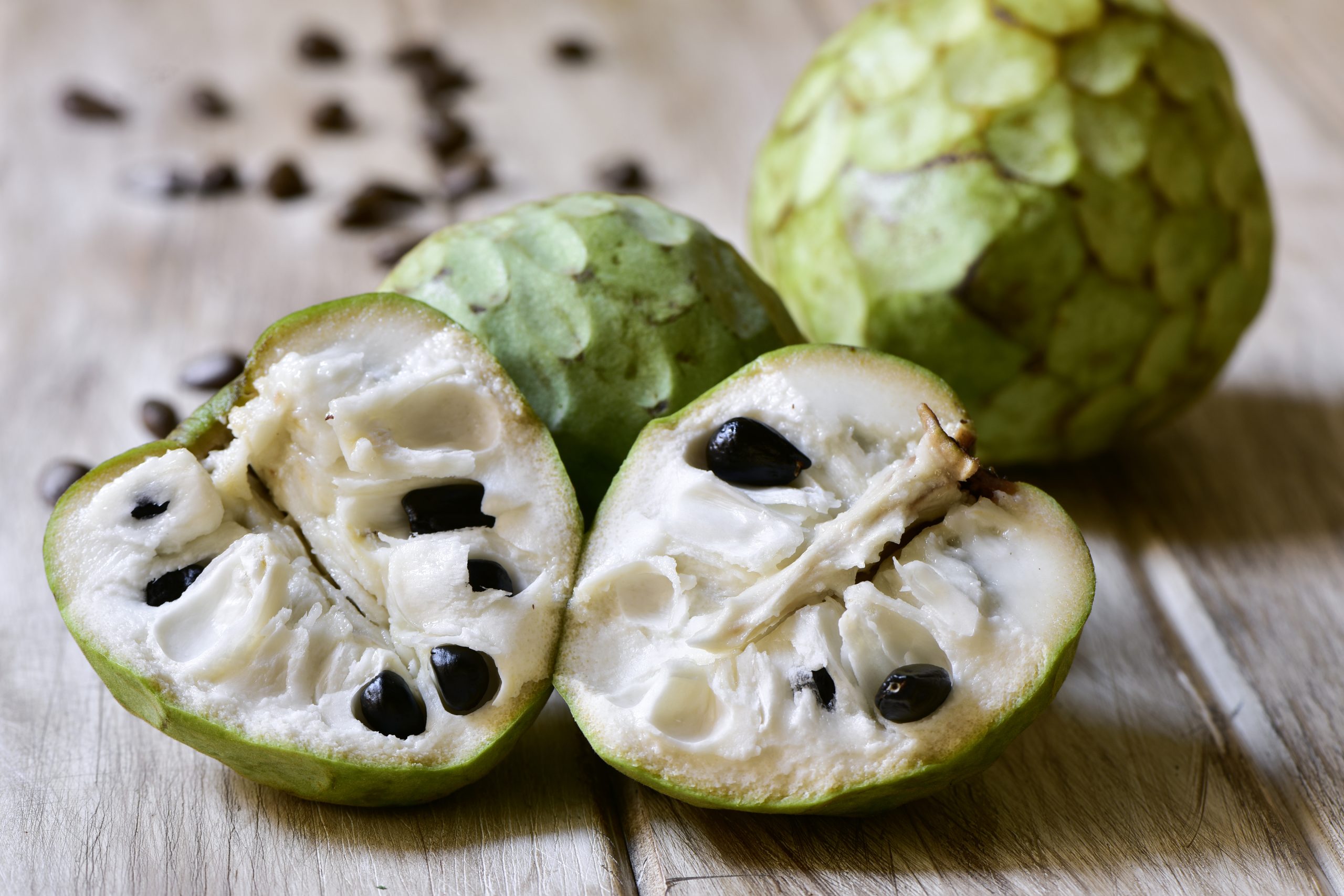The cherimoya is a unique species of tropical fruit native to Ecuador and Peru. The cherimoya was once dubbed "the most delicious fruit known to men" by American author Mark Twain.
Table of Contents
What is a Cherimoya?
Cherimoya (Annona cherimola), pronounced cheh·ri·moy·uh, also known as chirimuya and chirimoya by the Incas, is a member of the Annonaceae family, which also contains the closely related sweetsop and soursop. The fruit’s alternate name, custard apple, derives from the creamy texture of its flesh.
The cherimoya fruit is a sizable, green, heart-shaped compound fruit that is typically 5–10 cm in diameter and 10–20 cm in length. Their skin resembles overlapping scales or knobby warts. They mature to a fissured, dark color in the late winter and early spring.
Some have said it tastes like a cross between pineapple, banana, strawberry, papaya, and peach.
The History of Cherimoya
The cherimoya is thought to have originated from the Andes of South America. However, an alternate theory suggests Central America may have been the original location due to many of the plant’s wild relatives in that region.
It was eventually cultivated in southern Spain and Portugal between 1751 and 1797, and from there it was spread to Italy. These days, it is also grown in several nations in Africa, the Middle East, and Oceania. It now grows all over the Americas, including Hawaii since 1790 and California since 1871.
According to the botanist Berthold Carl Seemann, “The pineapple, the mangosteen, and the cherimoya are considered the finest fruits in the world and Haenke was right when he called the fruit a masterpiece of Nature.”
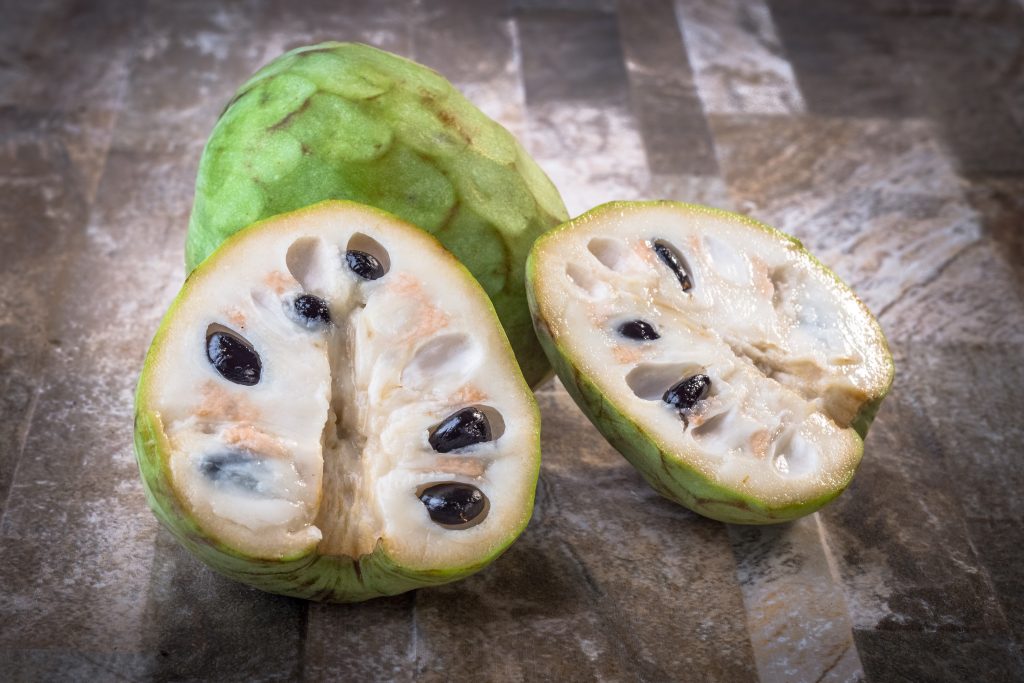
What Does a Cherimoya Taste Like?
Depending on the variety, a cherimoya’s taste can range from mildly sweet to tangy and acidic. Many people note flavors of pineapple, banana, pear, papaya, berries, and apple.
Warm some cherimoya slices by baking, broiling, or sauteeing them for a delicious snack or side dish. When cooked, the cherimoya doesn’t lose a bit of its sweetness, making it a perfect snack if you’ve got a sweet tooth.
How to Tell When Cherimoya is Ripe
| Firmness | Fruit with soft flesh is indicative of ripeness. The skin will be green and should yield slightly when pressed if the fruit is mature. |
| Texture | The texture of the fruit is similar to that of a soft-ripe pear and papaya when it is completely mature and still has a fresh, green-yellow skin color. Fruit is unfit for human consumption when the skin goes brown at room temperature. |
| Color | Ripe cherimoyas will start to take on a light brown hue. Unripe cherimoya will be bright green, while overripe fruits will be dark brown. |
| Scent | Cherimoyas don’t give off that much of an aroma but will smell faintly sweet when ripe. If you notice a funky odor, the fruit might have spoiled. |
They are typically picked before completely ripened to last longer before being sold. When you purchase it at the grocery store, leave it out to ripen and soften for a few days at room temperature.
Avoid any cherimoyas that are dark brown, smell strange, or are too soft. These are all good indicators that they’ve turned bad.
Are Cherimoya and Custard Apples Related?
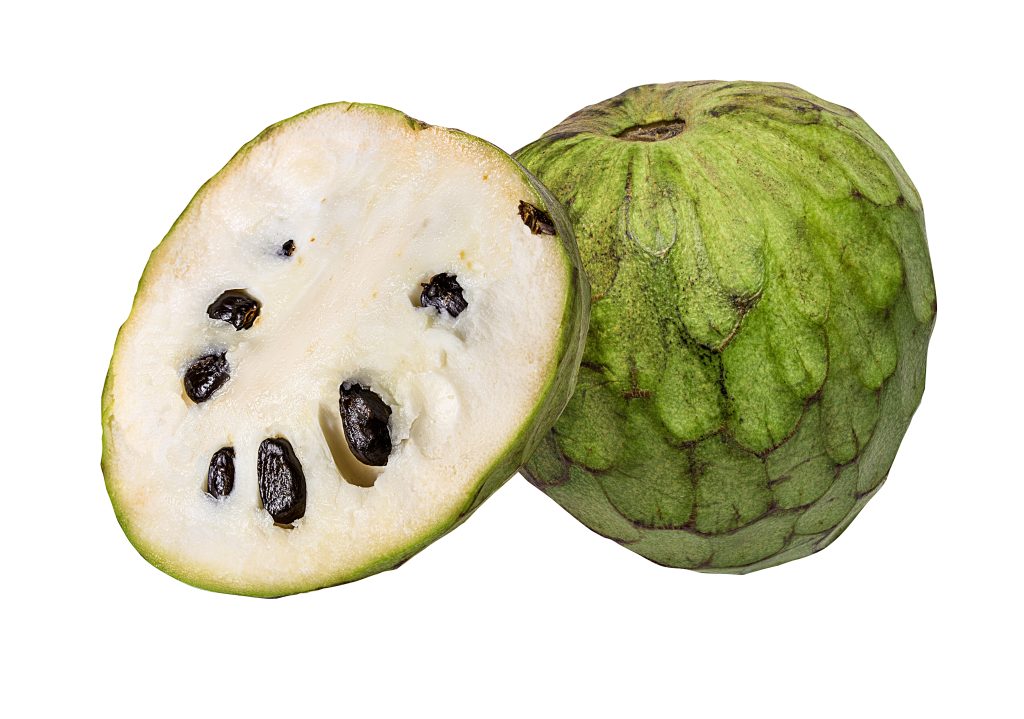
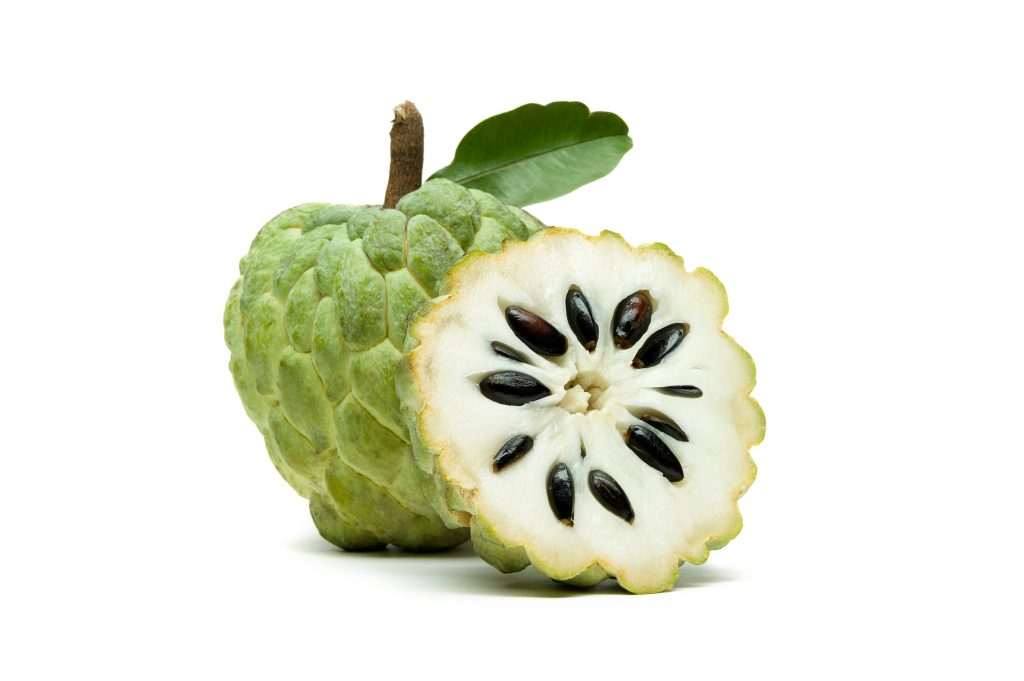
Yes, they are both in the Annona family. The names of these two intriguing foods are both known as custard apples. Therefore, it might be challenging to discern their distinctive personalities and characteristics.
Cherimoya: Annona cherimola is the scientific name of the cherimoya, which is a part of the custard apple family. Native to Colombia, Peru, and Ecuador. The big, green fruit is shaped like a heart or cone and can reach an astonishing 11 pounds each! Additionally, it has white, fragrant, and juicy edible meat. It requires full sun and is drought-tolerant.
Custard apple: Annona reticulata is the scientific name of the custard apple, which also goes by the names of wild sweetsop, custard apple, bullock’s-heart, and sugar apple. It originated in the West Indies. The fruit’s skin changes from yellowish-red to brown in hue. It has a whitish, creamy flesh and can grow up to 5 inches long. Each berry can weigh as much as two pounds.
Can I Eat Raw Cherimoya?
Eating raw cherimoya is safe, but you must avoid the seeds and stems because those parts are poisonous.
The cherimoya is commonly eaten fresh/raw or in smoothies, ice cream, and yogurt.
Cooking with Cherimoya
In order to eat the cherimoya, there are a few steps you need to follow to prepare the fruit’s flesh for consumption:
- Use a knife to cut it in two.
- After that, you will see smooth, dark, or ebony seeds. Scoop those out with a utensil or a knife. Do not consume them; they are not edible and might be toxic.
- The skin is not edible either, so scoop out the fruit’s custardy flesh and discard the skin.
- Cut the fruit into slices or cubes according to the recipe you’re adding the fruit to.
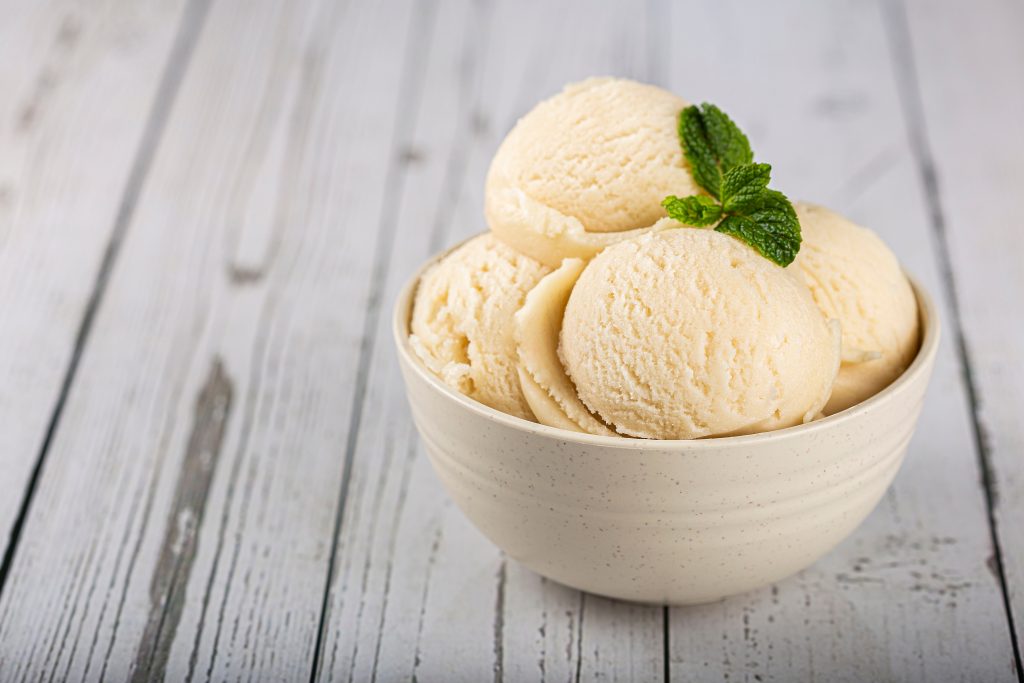
Here are a few of our favorite cherimoya recipes:
Raw Cherimoya Custard Pudding Recipe: Use cherimoyas to create this fruit-sweetened cherimoya pistachio custard dessert. It’s one of those dishes and fruits that you can never have enough of.
Easy Cherimoya Ice Cream: This no-churn Cherimoya ice cream has a classic taste and is perfect no matter the time of year! All that’s needed is sugar, egg yolks, Cherimoyas, heavy cream, and evaporated milk.
Cherimoya with Chile Lime Shrimp: Not every Cherimoya dish is sweet! Here’s an example of a great mix of sweet and sour. Limes, chiles, shrimps, and cherimoyas are the main ingredients, and this meal will leave you asking for seconds.
How to Store Cherimoya
Cherimoyas are tropical fruit, so getting too cold can cause serious harm to the fruit. It is preferable to keep them at 55 degrees or higher. However, you should store them in the refrigerator to prevent spoilage if you need to keep them longer than a day or two.
Cherimoyas are frequently covered in protective mesh jackets because they are prone to bruise readily. Since they degrade after they ripen in 1–2 days, they are typically marketed firm. Firm fruit should ripen at room temperature for about a week. Ripe fruit will yield under light weight, like a peach. Refrigerate for up to two days once ready.
Nutritional Benefits of Cherimoya
The cherimoya is packed with many healthy nutrients. Here are a few examples:
- Cherimoya is abundant in vitamin C, which supports the immune system’s health.
- They are high in fiber.
- Taking lutein found in Cherimoyas in moderation may help to decrease inflammation.
- They offer moderate quantities of magnesium and potassium, which help control blood pressure.
- The flavonoids in cherimoya can help support your immune system, and they might also help fight cancer.
Where to Purchase Cherimoya
Due to its rarity, you might have difficulty finding cherimoya at your local grocery store. They are typically in season from the late fall to early spring, so we recommend checking with your trusted local produce provider during that time.
You can also always try health food stores, online marketplaces that sell natural foods, and farmers’ markets. Cherimoyas are worth hunting down; fingers crossed you can find some near you!

